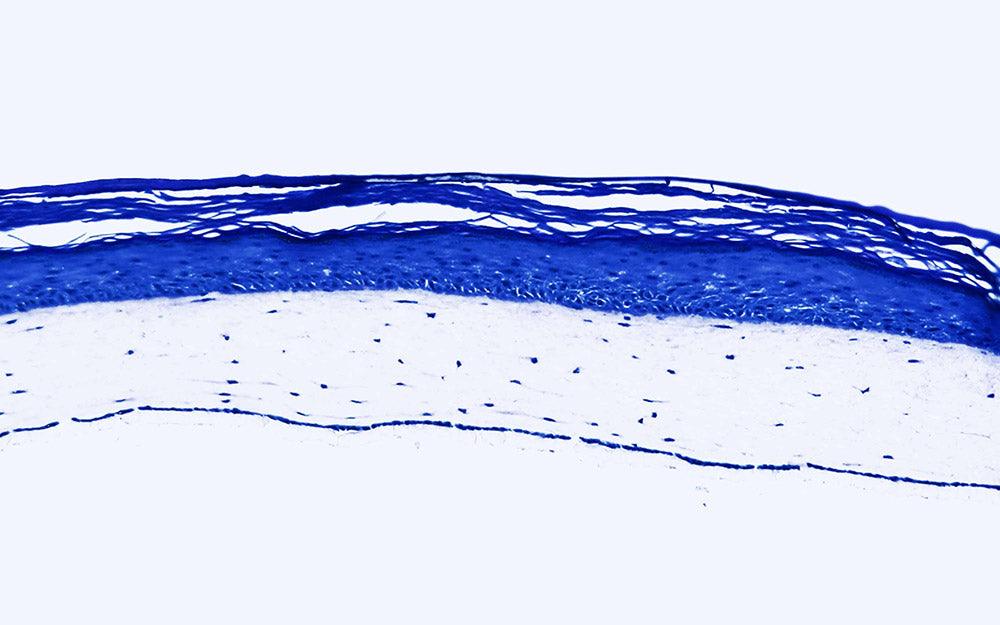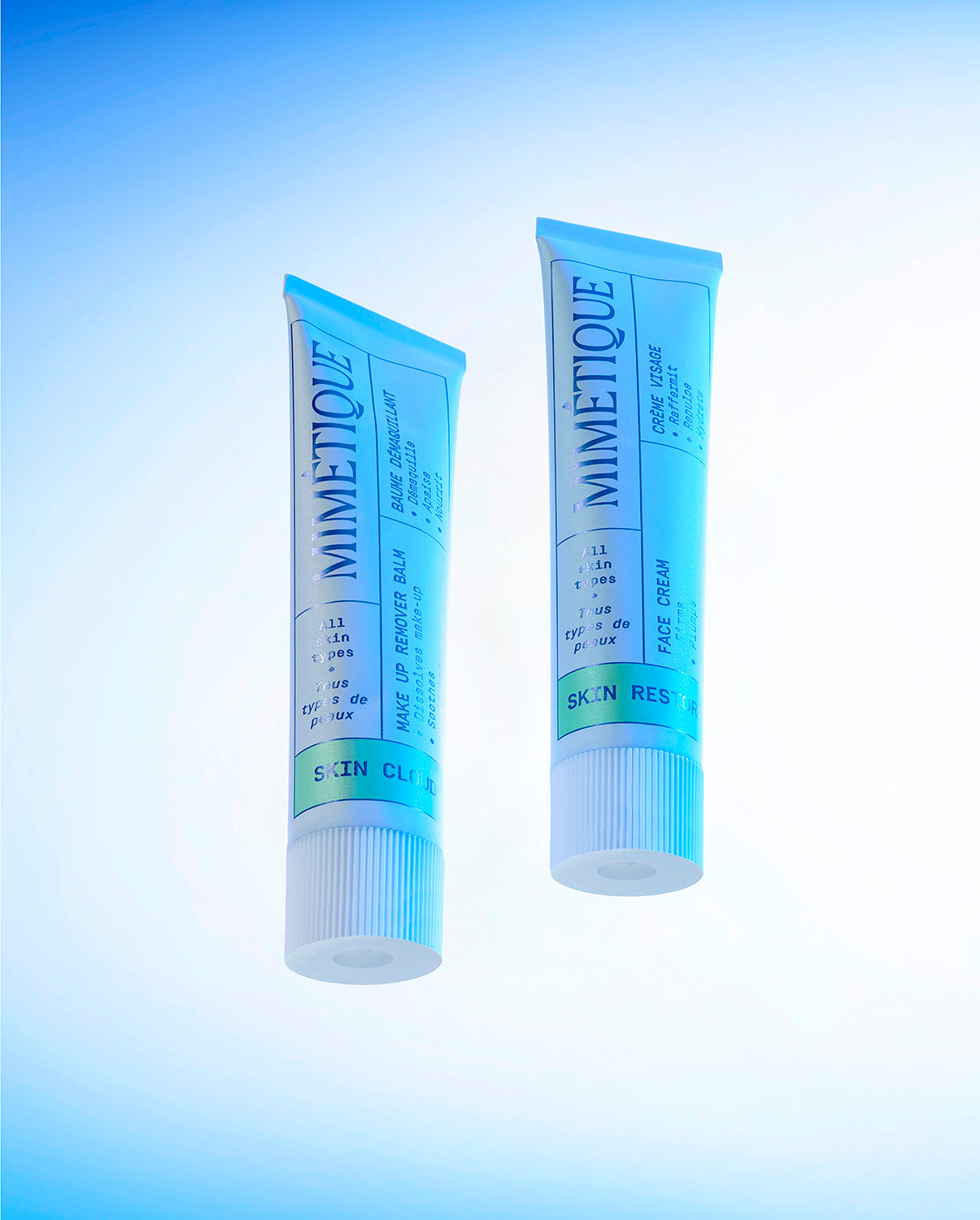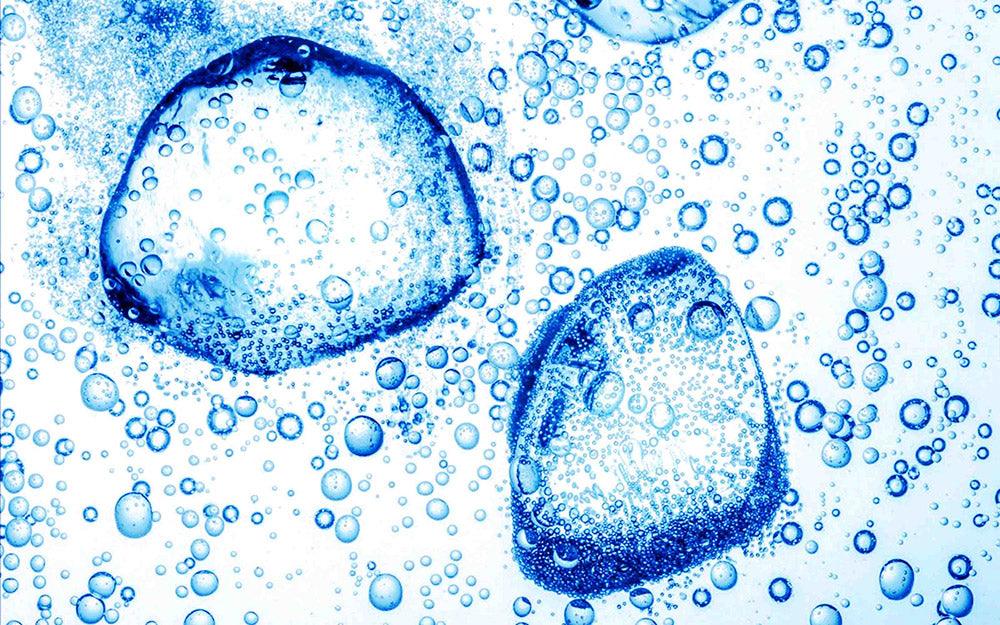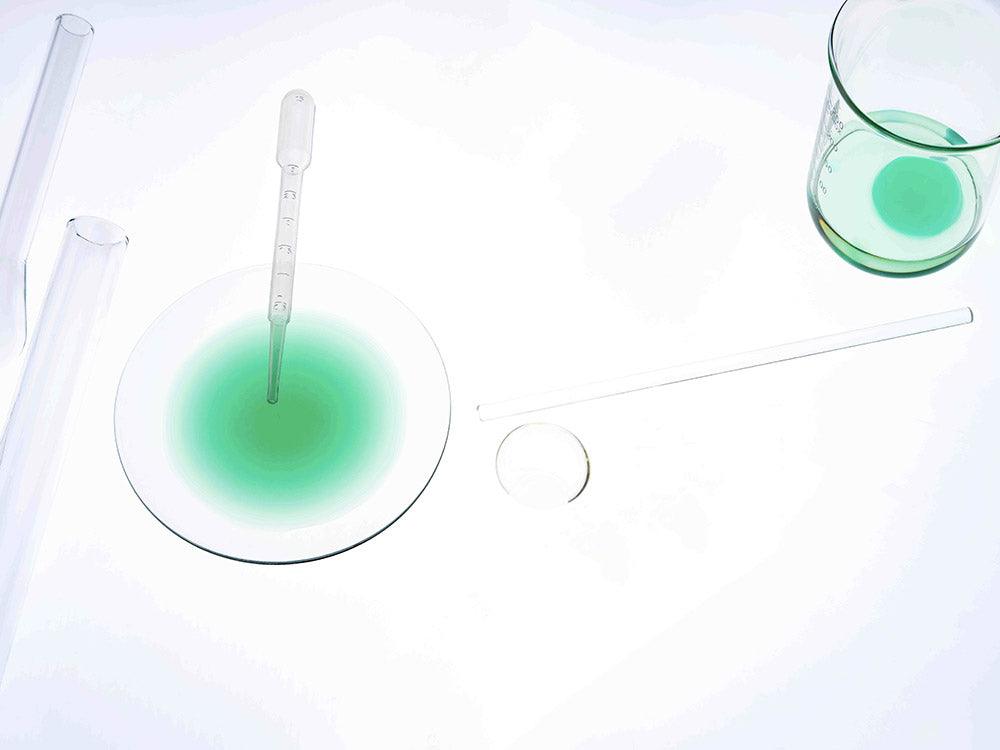
EXPLORING THE STRUCTURE OF THE SKIN: FUNDAMENTAL LAYERS AND ANNEXES
Imagine a cake. It's better when there are several layers, isn't it? You know what? It's the same for our skin. It's the only vital organ we can see and touch. It protects against shocks, microbes and the sun thanks to its three wonderful layers: the epidermis, the dermis and the hypodermis. At Mimétique, we were inspired by the structure and composition of the skin to build our products: this is Skin-Mimicry.
The many structures of the skin and their vital role
The structure of the skin: its first layer, the epidermis, the protective element
The epidermis is the most superficial layer of the skin's structure, it is the only layer we can actually see and touch.
It is composed of four distinct layers:
The stratum corneum is the outer layer of the epidermis. It is made up of corneocytes, flattened dead cells, which form a protective barrier against external elements (such as bacteria, toxins and fluid loss) thanks to a lipid cement. It is completely renewed every 28 days: this is the epidermal turnover. Fascinating, isn't it?
The granular layer, which is located below the cornea, plays an important role in the maturation of epidermal cells, which is the process by which the cells of the basal layer of the skin multiply and gradually differentiate into specialized cells of the horny layer. In addition to this, this layer is essential because it forms keratin: proteins that give the skin its resistance and waterproofness.
The spinous layer that contributes to the strength and integrity within the structure of the skin. It is made up of small "spines" formed by cell junctions that tightly connect keratinocytes (principal cells of the epidermis responsible for the production of keratin, a fibrous protein that gives the skin its strength and impermeability).
The basal layer is the deepest layer of the epidermis. It houses actively dividing keratinocytes that multiply to replace dead cells in the stratum corneum, ensuring the constant regeneration of the skin.
The dermis and its functions within the structure of the skin
We want our skin to be plump, and that's thanks to the dermis, which is located one level below the epidermis within the structure of the skin. It is about 0.5 to 1 mm. It is composed of collagen and elastin and provides structural support to the skin by forming a network of fibers. It is therefore thanks to it that our skin has a kind of mechanical resistance.
This layer also contains all the blood vessels, making it a major part of regulating body temperature as it redistributes blood flow.
Finally, the dermis contains sensitive nerve endings, which allows for sensory perception.
In short, the dermis is responsible for the support, sensitivity and protection of the skin.
And what is the hypodermis?
Well, they are simply the foundations of the epidermis and dermis. It is made up of small balls of fat, called adipocytes. These elements contain mitochondria which can be associated with small energy factories.
In other words, the hypodermis is a bit like the guardian of the body's thermal insulation: it stores energy in the form of fat and uses it as a protective cushion that absorbs shocks.
The essential annexes of the skin structure
First of all, what is an appendix? It is simply a hole that pierces 75% of the length of the skin. There are several types of appendages, each more essential than the other within the skin.
Hair follicles
As their name suggests, they are the ones that house the roots of the hairs of our skin, they are located mainly at the level of the dermis. They are very important for body hair, because they allow the secretion of sebum that lubricates and protects the hairs.
Sweat glands
The sweat glands play a major role within the structure of the skin in simply regulating body temperature by producing sweat. This then evaporates at the surface of the skin and thus allows the body to cool down. These glands are particularly active when it is hot or when we are in full physical activity.
In addition to all this, the sweat secreted also allows the elimination of many toxins and waste that may be present on the skin.
The sebaceous glands
Just like hair follicles, sebaceous glands also produce sebum, which provides intense hydration and softening to the skin throughout its structure. Sebum is also a formidable agent against bacteria, fungi and possible irritations that the skin may suffer. These glands are present throughout the body, with the exception of the palms of the hands and the soles of the feet!









